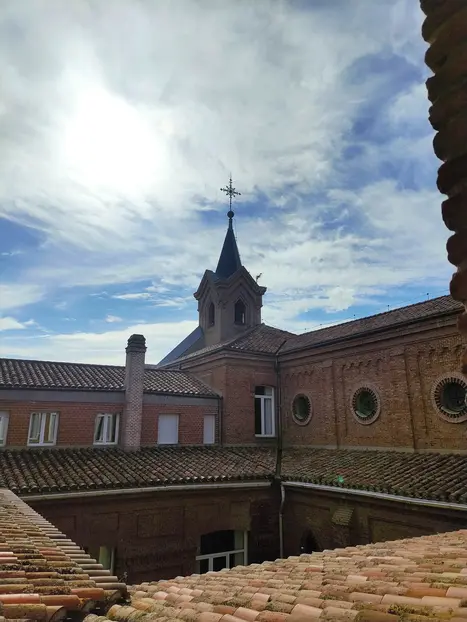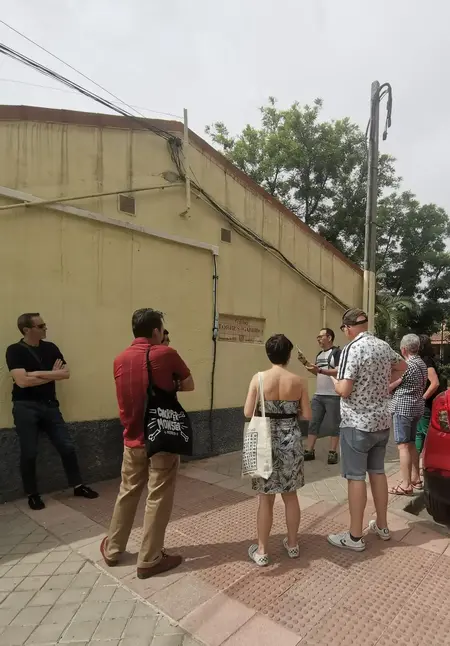















Il Carabanchel delle colonie: XIX e XX secolo
Descrizione del tour
Dopo il successo del primo tour del Carabanchel più antico, lancio ora un secondo tour che ci porterà a conoscere il Carabanchel del XIX e XX secolo . Sarà, infine, la passeggiata che ci porterà alla famosa Colonia de la Prensa .
Il tour inizia in Plaza de Carabanchel da lì, dopo un'introduzione, visiteremo la parrocchia di San Sebastián . Successivamente, ci concentreremo sull'antica via Sombra , dove ci sono tre punti importanti: c'era l' Accademia di Musica, la conceria Salaberry e , soprattutto, la casa che ha visto crescere uno dei più importanti carabanchelera adottivi della storia : lo scrittore e la vice María Lejárraga.
María apparirà infatti in diversi tratti del percorso, poiché ha vissuto e descritto intensamente la sua infanzia e adolescenza nel centro storico di Carabanchel de Abajo.
Lasceremo via Sombra in direzione dell'antica via San Roque (oggi Padre Amigó) per ammirare l'antico mattatoio di Leandro Teresa. Prenderemo poi María Odiaga per entrare nel quartiere di Torres Garrido (1955).
Il nostro viaggio proseguirà verso via Alba de Tormes (una delle più antiche di Carabanchel) per entrare nel parco della Patilla , dove vi parlerò della scuola di Santa Cruz, che vedremo in lontananza, e del Marchese di Ceriola , proprietario di la terra che oggi occupa quel parco.
Infine, continueremo per Alba de Torme s, mentre vi presento le delizie cubane, la casa di campagna del conte di Yumurí che alla fine del XIX secolo sarebbe stata divisa in due per ospitarla dal 1910, nella parte che rimase il più vicino al municipio di Carabanchel de Abajo, noto come la colonia della stampa.
Con l'arrivo di questa colonia sorse il "New Carabanchel", un quartiere ricco di case moderniste che accolse prima giornalisti e poi artisti e poeti, tra cui Manuel Machado, fratello di Antonio Machado. Oggi, con un'aria un po' più decadente, la colonia sopravvive al passare del tempo e, come puoi vedere, alcuni dei suoi palazzi sono rimasti praticamente gli stessi da quando furono costruiti negli anni 1910-1920.
Il percorso si conclude all'uscita del quartiere, presso il famoso arco che invita a scoprire questo gioiello dell'architettura modernista che si deve, in gran parte, al poco conosciuto architetto Felipe Mario López Blanco.
Ci vediamo su questa nuova rotta!!
Cosa vedremo in questo tour?





